Menus
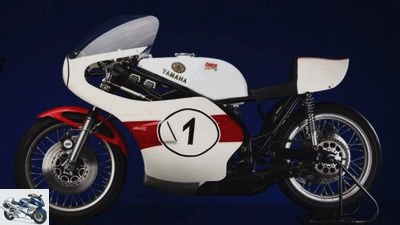
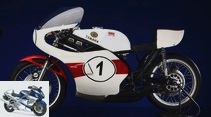
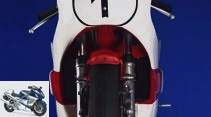

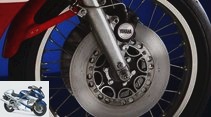
17th photos
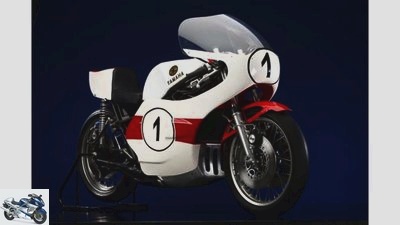
1/17
Yamaha TZ 750
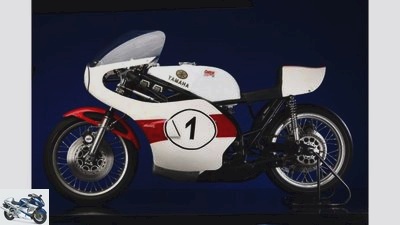
2/17
Yamaha TZ 750
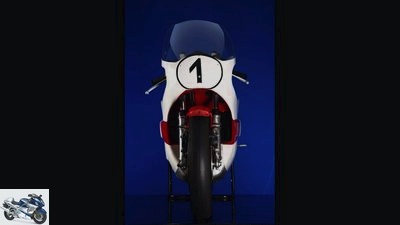
3/17
Yamaha TZ 750
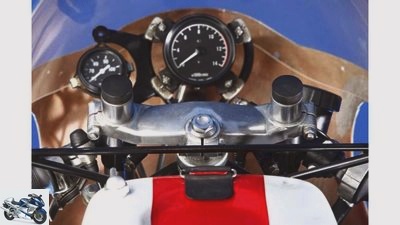
4/17
Yamaha TZ 750
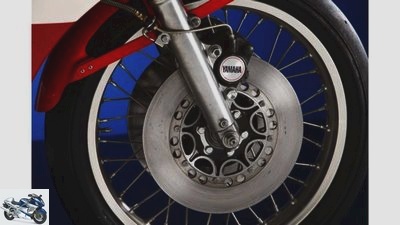
5/17
Yamaha TZ 750
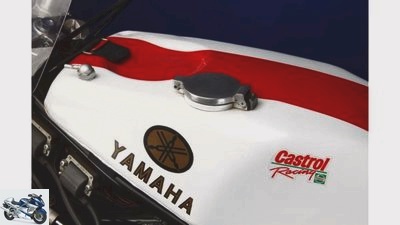
6/17
Yamaha TZ 750
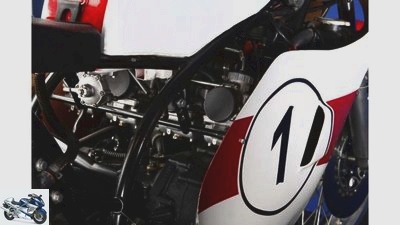
7/17
Yamaha TZ 750
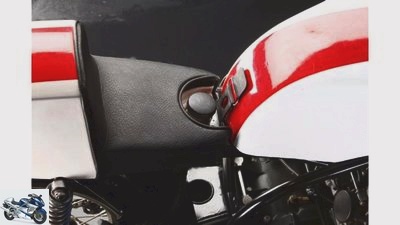
8/17
Yamaha TZ 750
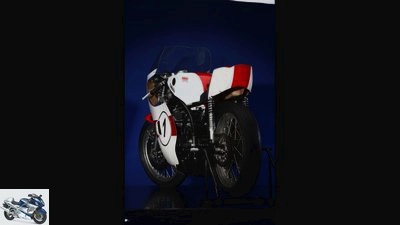
9/17
Yamaha TZ 750
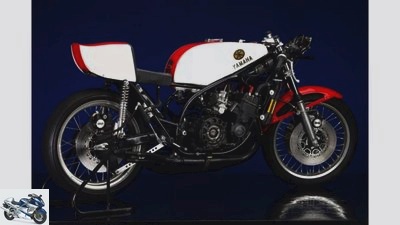
10/17
Yamaha TZ 750
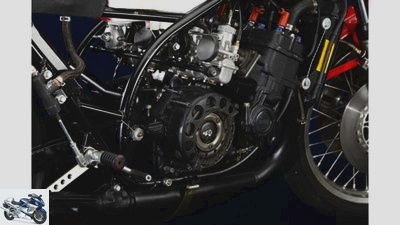
11/17
Yamaha TZ 750
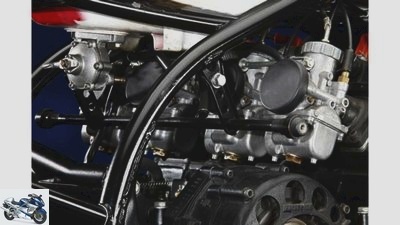
12/17
Yamaha TZ 750
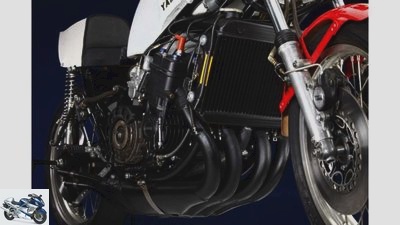
13/17
Yamaha TZ 750
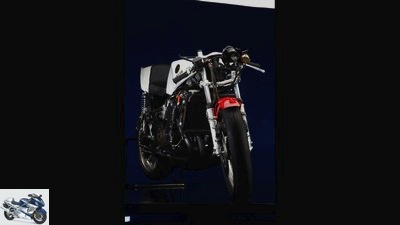
14/17
Yamaha TZ 750
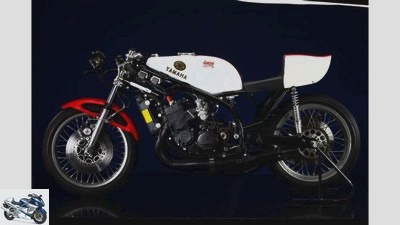
15/17
Yamaha TZ 750
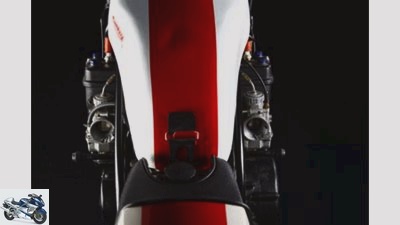
16/17
Yamaha TZ 750
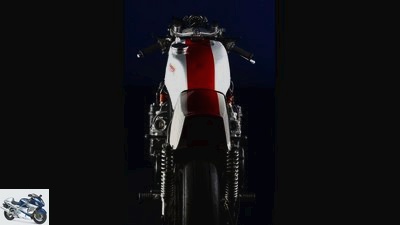
17/17
Yamaha TZ 750
Studio: Yamaha TZ 750
Success model
Content of
The Yamaha TZ 750 came, saw and won. Their toughest opponents were the officials of the racing associations
"Much enemy much ore." Either way one could describe the story of the Yamaha TZ 750. The Formula 750 had developed from a US racing series in which originally modified road machines were launched. But at the beginning of the 1970s, disguised factory machines displaced the road cuttings. Although the 750 three-cylinder from Kawasaki and Suzuki were based on the production models, they had heavily modified engines and completely independent chassis. In addition, thoroughbred Yamaha TZ 350 racers made the 750s more and more contested for victory. The 350s were allowed to start because they had been built more than 200 times.
But Yamaha had long since decided to develop a production racer for the 750cc class: the TZ 750 appeared in 1974 and promptly won its debut under Giacomo Agostini in Daytona. This promptly called on competitors and officials to the scene: Although the 200 units built met the most important homologation hurdle, as a thoroughbred racing machine without an electrical system, it contradicted a passage in the original set of rules. After all, its designers had developed a motorcycle for one purpose: to win races. They drew on their experience with their two-cylinder racing machines and built the engine on the crankshaft and cylinder dimensions of two 350 series engines lying next to one another. That’s why the first TZ 750, like our photo model from collector Rolf Eisenmann, had 695 cm³.
It was not until the TZ 750 C that the capacity limit was reached with a bore that was enlarged from 64 to 66.4 mm. Many crankshaft components came from the TZ 350, but the cylinders were fundamentally different. The 350 was slot-controlled, the 750 had membrane inlets. For the TZ 750 A, Yamaha gave a restrained 90 hp on the rear wheel, after the increase in displacement 105. The chassis was completely redesigned; the brake system alone, with three 296 mm discs, relied on the steel two-piston fixed calipers of the RD series machines. The exhaust system caused problems from the start. Due to a lack of space, the expansion chambers were not round, but flat and often tore during operation.
On the TZ 750 D, a completely different installation solved this problem. For just under 20,000 marks, every private driver could buy a TZ 750 including a spare parts kit. A lot of money back then too; measured against a TZ 350 for 13,000 marks but cheap and compared to the TZ 500 from 1979 for 44,900 marks a bargain price for the most potent and fastest racing motorcycle in the world.
Related articles
-
Hartmann cult bike Yamaha RD 500 LC four-cylinder racing engine for the road In the best tradition, the Yamaha RD 500 also ensured that the …
-
Comparison test Suzuki GS 500 against Yamaha XP500 TMax
Jahn comparison test between the Suzuki GS 500 and the Yamaha XP500 TMax overtaking maneuvers Yamaha’s XP500 TMax is basically a motorcycle. Do driving now …
-
Yamaha Tracer 700 in the top test
16 pictures 1/16 Yamaha Tracer 700. 2/16 Ährenwert: On country roads, the second and third category is the Tracer 700 …
-
Comparison test KTM 620 LC4 EGS-E against MuZ Baghira against Suzuki DR 650 SE against Yamaha TT 600 E flight hour Does the KTM LC 4 fly thanks to the E-Starter of the …
-
Yamaha MT-07 model year 2017 and 2018 test
Arturo Rivas 16 pictures Arturo Rivas 1/16 The Yamaha MT-07 models from 2017 and 2018 in a comparison test. Arturo Rivas 2/16 2018: The damper …
-
Buy second hand Yamaha XS 400 DOHC
Buying a used Yamaha XS 400 DOHC early start The homely design cost the Yamaha XS 400 dohc top positions in the past. But solid, durable technology …
-
Yamaha YZF-R6 (2017) in the driving report
Yamaha 30 pictures 1/30 The new Yamaha YZF-R6 in the driving report. 2/30 The new Yamaha YZF-R6 in the driving report. 3/30 The new Yamaha YZF-R6 in the driving report. 4/30 …
-
fact 20 years of the Yamaha YZF-R1 She runs with the times The Yamaha YZF-R1 appeared in 1998 on the scene. Shortly before her 20th birthday, MOTORRAD was still …
-
Yamaha Yard Built XSR 900 Monkeebeast by Wrenchmonkees
Indian Motorcycle 22 images Indian Motorcycle 1/22 Yamaha Yard Built XSR 900 Monkeebeast by Wrenchmonkees. Indian Motorcycle 2/22 Yamaha Yard Built XSR …
-
Family duel 600cc four-cylinder from Yamaha
Family duel 600 four-cylinder from Yamaha Everything so beautifully colorful here Basic, funky, classy, radical – Yamaha has the right 600 for every requirement …